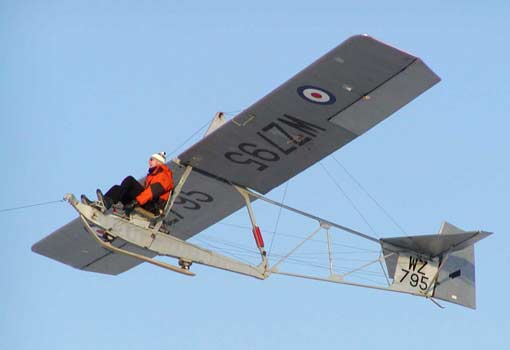Tom,
As an example of one hang glider's root cord, I just went out and measured the camber of what we call the "nose" batten. This particular batten is just over 4' long and has a camber of 7" at around the 25% (from the LE) point.
Now, the nose to tail dimension of the sail (at the root) is longer than this batten by at least 2 - 3 feet. Also, the leading edge structure increases the camber height since it sits slightly below and just behind the nose batten. That would make the effective camber at the root cord of this particular glider to be 8" - 9".
Next, you ask about the lower surface camber. Well most double surface gliders have lower battens that are absolutely straight. This would appear to mean the wing has no camber in the lower surface. However, under in-flight loads the lower battens do deform to some degree creating some lower surface camber.
Personally, I have never tried to measure the difference from static (on the ground) zero camber to (minor) actual in flight lower surface camber (kind of hard to do). Also, almost every double surface hang glider only has 3 - 5 lower surface battens (as opposed to 6-10 upper surface battens) on either side of the wing. That means that the lower (outer) surface of the sail (more often without battens) will have a significantly greater amount of camber than the sail/wing closer to the root.
Now, as has been implied and stated directly above, What I have just given you is ONE example from one make and model of glider. There are literally dozens of other makes and models of hang glider, not to mention different sizes of most of those models. There will be minor (or more major) differences between these different designs.
However, with the typical modern swept wing hang glider (as derived from the early Rogallo design) will have upper sail battens that contain more or less camber and lower battens that have little or no (static) camber. It will also have a basic "A" frame structure where the slanting vertical parts of the "A" are the leading edge tubes and the horizontal cross piece is called the cross tube, cross spar, or even cross bar. It acts to place the sail under span-wise tension and is hinged at the mid point to allow the wing to be broken down for transport.
If the structure that you are planing on using deviates much from a general swept wing (Rogallo based) hang glider, then you are venturing into less well know territory. Your structure needs to be capable of creating and maintaining a functioning airfoil under a wide range of conditions.
It's also important to know that hang gliders are "plastic" and dynamically change their shape in a fairly complex manner while maneuvered by way of pilot weight shift. Hang gliders are what I would call the closest thing man has come to creating the out stretched wings of a large soaring bird.
BTW - I have contemplated creating flying wings that depart quite a bit from the typical frame design of the swept wing hang glider. So I can appreciate your interest.
 Home
Home




